Review of General Foraging Guidebooks
– covering plants, fungi, seaweeds and possibly shellfish
Below are brief reviews of some of the general foraging books in my collection with guidance on relative strengths and weaknesses. I’m afraid my collection isn’t exhaustive while my time is, so apologies for what is left out – I would be happy to add to the list if review copies are provided and please feel free to add your recommendations to the comments list below.
Related pages:
- General guidance on foraging guidebooks and online resources
- Plant foraging guidebooks
- Fungi guidebooks
- Online foraging resources
- Wild Food Guide
- Further reading – coming soon
………………………………………………………………………………………………………………………..
The Forager’s Kitchen by Fiona Bird (£16.99 glossy hardback)
A beautiful book with great pictures of finished wild food dishes and an emphasis on simple but exciting wild recipes (over 100). Fiona Bird is passionate about foraging and it shines through in the text, which covers a handful of “star” species in each chapter (Flowers &Blossoms, Woodland &Hedgerow, Fruits & Berries, Herbs, Sea & Shore).
Strengths
- Broad coverage, focussing on the most rewarding species across lots of habitats
- Lots of excellent innovative, easy recipes
- Beautiful pictures of finished dishes
- Lots of general tips on sustainable harvesting, preserving and folklore
- Includes plants, shellfish, seaweeds and some fungi
- Inspirational and fun
Weaknesses
- Not a stand-alone identification guide – pictures/descriptions are not sufficient for confident identification
- Mushroom section very limited
- Limited coverage of poisonous look-alikes
A lovely book covering a focussed range of “star” wild foods. As the title suggests, this is fundamentally a forager’s recipe book with great information on harvesting and some ID guidance, but not an ID guide.
………………………………………………………………………………………………………………………..
Food for free by Richard Mabey (£5 – £30 various formats)
This is the book that kick-started the resurgence of foraging in the 70’s and we all owe a debt of gratitude to Richard Mabey for his beautiful writing and insight. It has been reprinted and updated many times and in many formats – from a tiny Collins Gem version to a huge coffe table tome.
- Broad coverage of core plants, fungi and seaweed
- Traditional recipes, plant lore, harvesting tips and inspiration
- Beautifully written
- Excellent colour photographs (larger editions)
- Some coverage of poisonous look-alikes
- The Collins Gem version is very compact/portable and includes a useful wild food calendar
- Not a stand-alone identification guide – pictures/illustrations in each format are not sufficient for confident identification
- Does not cover shellfish
- Weak on national distribution of species (focus on Southern England?)
- Little guidance on responsible/sustainable harvesting
Wild Food by Roger Phillips (£18.99 glossy paperback)
A work of art on many levels, picking up the baton from Food for Free in the early 80’s. Stunning pictures of a wide range of wild foods growing and being cooked in the wild.
Strengths:
- Stunning, inspirational colour photography
- Lots of traditional recipes, plant lore, foraging tips and general inspiration
- Broad coverage of plants
Weaknesses:
- NOT an ID guide – pictures are more artistic than technical
- Hardly any coverage of poisonous look-alikes
- Limited coverage of fungi and seaweeds
- Does not cover shellfish
- Little guidance on responsible/sustainable harvesting
A great book to browse at home – constantly inspires to find, cook and photograph new species, but NOT an ID guide.
………………………………………………………………………………………………………………………..
A Handbook of Scotland’s Wild Harvests edited by Fi Martynoga (£12.99)
Just published in 2012, this paperback represents the collective knowledge of the Scottish Wild Harvest Association and Reforesting Scotland .
Strengths:
- Wide-ranging coverage of plants, fungi and seaweeds
- Excellent wild food calendars and harvesting tips
- Plant lore, traditional recipes and inspiration
- Extra information on medicinal and craft uses of wild resources
- Focus on responsible, sustainable harvesting
- Clear chapter structure
- Cheap and portable
Weaknesses
- NOT an ID guide – no photographs or colour illustrations
- Scotland-focussed (this is a strength if you are lucky enough to live in Scotland!)
- Does not cover shellfish
- Limited coverage of poisonous look-alikes
A great introduction to responsible foraging and medicinal/craft uses of plants – still well worth having if you live south of the border. NOT an ID guide.
………………………………………………………………………………………………………………………..
Foraging – The Essential Guide to Free Wild Food by John Lewis-Stempel (£6.99)
John Lewis-Stempel spent a year eating only wild food which resulted in his book “The Wild Life” (I haven’t read it yet). It also led to this small, compact, less discursive paperback guide to foraging.
Strengths:
- Efficient descriptive style
- Very broad ranging, including plants, fungi, seaweed, shellfish and roadkill
- Includes a chapter on urban foraging
- Clear structure, broken down by habitats (coast, hedgerow etc)
- Simple, practical recipes
- Wild food calendar and extensive lists of synonyms
- Portable and very cheap
Weaknesses:
- NOT an ID guide – there are no photographs or illustrations
- Limited information on distribution
- Informative without being inspirational
A wide-ranging but paired down, no frills general guide. NOT an ID guide.
………………………………………………………………………………………………………………………..
Self Sufficiency – Foraging by David Squire (£7.99)
This book is part of a series of books published with the prefix “Self sufficiency” that includes books on bee keeping, soap making etc.
Strengths
- Full colour illustrations – this is the only general foraging guide I have come across that has sufficiently detailed descriptions and colour illustrations to be used as an identification guide in the field.
- Wide ranging – covers core plants, fungi, seaweed and shellfish
- Clear colourful layout
- Includes some plant lore, recipes, harvesting and processing tips
- Portable and cheap
Weaknesses
- Doesn’t cover geographical distribution of species – only the habitats they grow in. This could result in some wild goose chases for beginners!
- Limited coverage of poisonous lookalikes – some toxic fungi are mentioned but very little on dangers of carrot family
- Lists comfrey (which is now generally considered unsafe to eat) as edible with no health warnings
A really excellent introduction to foraging – the perfect beginner’s book providing enough ID, background and general foraging information to get anyone started.
………………………………………………………………………………………………………………………..
Edible Wild Plants and Herbs by Pamela Michael (£20)
A hefty hardback covering mostly plants, but also some fungi and seaweeds.
Strengths
- Excellent large full-colour illustrations of each species which will be of help in identification
- In depth coverage in text of traditional medicinal and food uses and plant lore
- Lots of traditional recipes, herbal remedies and craft uses
- Clearly laid out
- Includes alternative/local names
Weaknesses
- Covers very few fungi and seaweeds
- No index
- Little coverage of poisonous lookalikes
- Little coverage of “general” foraging advice – legalities, conservation etc
- Harvesting calendar not very clear
A beautiful book and great recipe/background resource to have at home that will provide insight, inspiration and help with identification.
………………………………………………………………………………………………………………………..
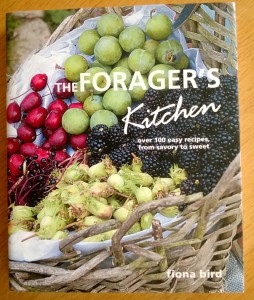
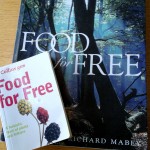
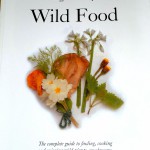
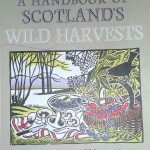
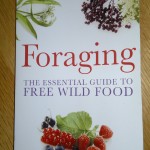
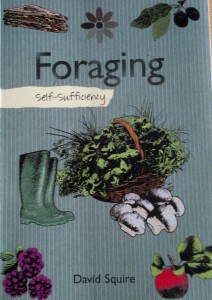
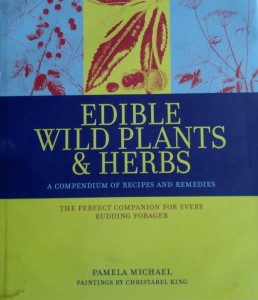
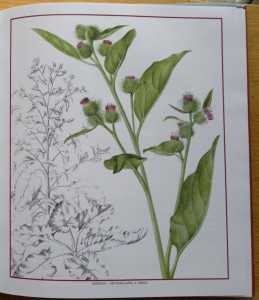
11 Comments
There seems to be a distinct lack of a good ID guide book that is easily portable !
Yes, possibly, though this is by no means a comprehensive round-up!
There are dozens of excellent plant/wildflower guides. I use these in conjunction with foraging guidebooks at home
Why don’t you write your own ideal guide!?
You’re reading it!
…But seriously…plans are afoot.
Watch this space.
Really enjoying your website. Are you any closer to publishing your own guide? I have a two of the books you’ve reviewed and think your own guide would be up a good few notches. Happy to help test any drafts as a user for feedback.
This is my winter project…Hopefully have one out next year!
Honestly, I am still looking for a comprehensive field guide as all books I have generally are quite poor. If I knew the plants and had the time, I could probably do a far better job, but I don’t.
Any Idea how big your book will be?
Looking for a book with a composition like; a full colour photo, plus any public domain drawings included etc, plus simple identification points / locations, plus uses, plus any available / known mineral/vitamin benefits etc/protein.
Wouldn’t even have to be for all plants, just the ones easily researchable if it’s too much work etc.
Max 500 pages / minimum 400, A5 / Thin glossy pages to last.
If it had all these things, I think it would be worth for me £25 – £30.
Any idea what sort of book you will do? Or a new book you have seen with a great review etc?
Any help appreciated, thanks.
The difficulty is in what to leave out. Given there are 1000’s of edible wild species (plants, fungi, seaweed), your desire for photos, illustrations and quite a bit of information still makes for a massive book, or one that covers only a small fraction of what is out there. You could try John Wright’s latest – The Forager’s Calendar. Its good, trying to cover most tasty/accessible stuff, but you’ll likely be disappointed with the illustrations/phots. I’m currently in discussions with publishers/editors about how to solve this challenge in my own book.
Hi there!
Which one would you recommend for identifying seaweed in special? Already have some books on plants and mushrooms but none covers algae obviously… 🙂
Thank you so much for all the information!
The best book for identifying seaweeds around the UK is ‘Seaweeds of Britain and Ireland’ by Francis Bunker et al. It isn’t a foraging book though – just ID and scientific background. For good ID of key edible seaweeds, plus loads of great foraging info and recipes, I recommend “The Irish Seaweed Kitchen” by Prannie Rhatagan. It is also now available as an abridged ID version I think.
Great reviews! Your detailed analysis of each foraging guidebook provides a comprehensive overview, highlighting their strengths and weaknesses effectively. This is a valuable resource for anyone looking to delve into foraging, whether they’re beginners or seasoned enthusiasts.